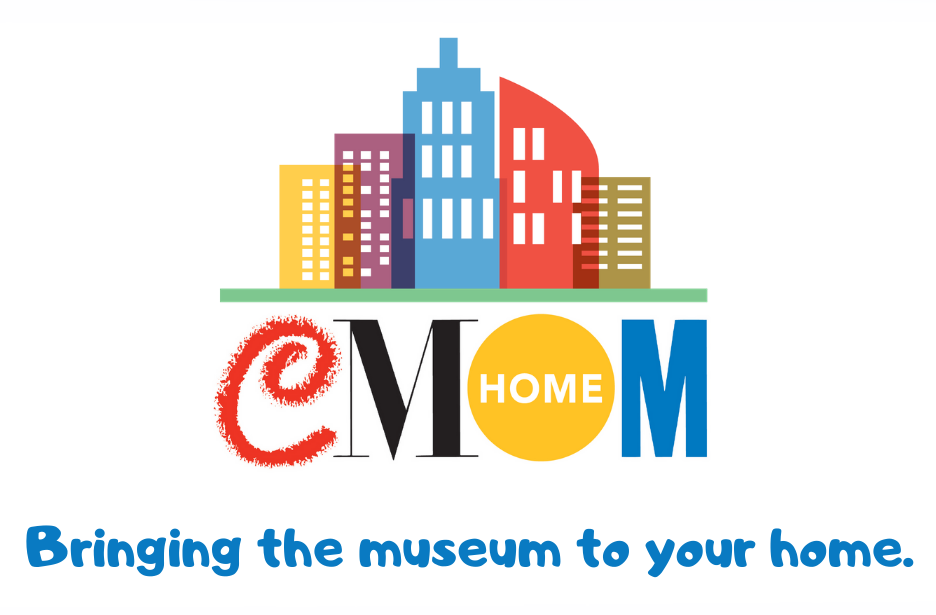Learn Together
Encouraging children to consider what makes up their neighborhood helps form connections to their communities and cultures. Practicing everyday conversations and acting out imaginary activities also helps children develop language and critical thinking skills.
Materials
- Cardboard boxes of various size and shape
- Recycled materials: Newspapers, magazines, paper towel or toilet paper tubes, construction paper, cloth or fabric, string, buttons, beads, etc.
- Glue or tape
- Paint and paintbrushes
- Markers
- Scissors
Create Together
Let’s make our own city installation!
Before you start, take a walk around your neighborhood. Make observations. What kinds of buildings and businesses do you see? Do you see hospitals or fire stations? Libraries? Pet stores? Grocery stores? What makes up your neighborhood?
- After your walk, plan your city out! What kinds of buildings do you want to include in your home installation? Do you want tall skyscrapers or small buildings? Do you want any greenery like trees or bushes? What about a nail salon or a gas station? What’s in your community? Make a sketch to help you plan it out!
- Use the cardboard boxes as a base. You can stack them on top of each other, cut them up to make bigger buildings, or a combination of the two. How can you use the boxes to create the base of your buildings? Secure your boxes together with glue or tape.
- Decorate your buildings! Use recycled materials, like newspapers or magazines, to cover the boxes. Do you want to paint the buildings? Do you want your buildings to have windows and doors? You can either draw them on or, with the help of a grown up, cut them out.
- Create signs for your buildings. Do any of your buildings have a business, like a grocery store or clothing shop? Make signs for these businesses to display what they are about! Create names for them.
- Do you want to include trees, bushes, or patches of grass? What materials can you use for this? Use materials like paper towel or toilet paper tubes and construction paper to make trees and bushes.
- When you feel you are done constructing your city installation, take a walkthrough. Did anything from your neighborhood inspire you? Do you notice any similarities between your own neighborhood and your city installation? Is there anything else you can think of to add?
Next time you take a neighborhood walk, become Park Detectives or City Spies with CMOM’s All the Way to K. Learn how everyday conversation leads to reading later on.

